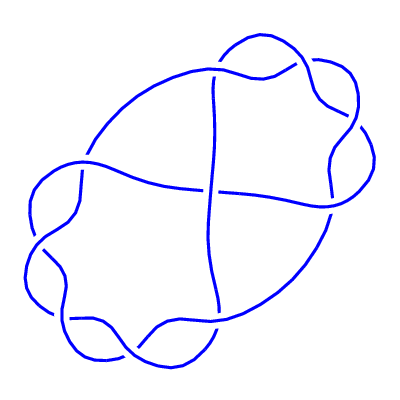my teaching interests
My teaching interests are very wide, but I particularly like geometry and topology, and in fact David Jordan and I have written a book called A Topological Aperitif, published by Springer-Verlag.
Recently I have given lectures at the summer school in Ali Nesin's "Mathematical Village" in Turkey. Here are my lecture notes on Special relativity and on Twistor geometry. Ali Nesin won the 2018 Leelavati Prize for creating this unique and beautiful environment.
At various times I have taught mathematics at King's College, London University, at Lincoln College, Oxford, and for the Open University. Also, for many years I used to give short courses in the Mathematics Department in Siena.
Until 2019 I was Professor of Pure Mathematics at the University of Plymouth. Here I taught most of the elementary parts of pure mathematics, as well as algebraic topology, special relativity, and the history of mathematics. Also, I have supervised a variety of honours projects, such as those further down this page.
In 2007 I gave one of the London Mathematical Society Popular Lectures, on Knots, which is available here. In December 2010 I gave a "Café Scientifique" talk on "Why did the ancient Greek mathematicians focus on ruler and compasses?"
undergraduate projects
Relativity
The spacetime described in Einstein's special theory of relativity is a very beautiful geometry. In particular, there is a deep relationship between the Lorentz group and the Möbius group, which is an important hint that complex geometry is somehow fundamental. One can see more of this in the projective geometry of twistor space, which is related to spacetime by the Klein correspondence, a piece of classical algebraic geometry itself worthy of independent study. The more advanced ideas here are at the level of a masters project. References:
- Rindler, W 1991 Introduction to Special Relativity Oxford University Press.
- Penrose, R 1959 The apparent shape of a relativistically moving sphere Proc. Camb. Phil. Soc. volume 55, pages 137–139.
- Huggett, S and Keast, S The Penrose Transform unpublished.
Riemann surfaces
Instead of thinking of complex numbers as lying on a plane, it is much better use stereographic projection to put them on a sphere, called the Riemann sphere. The Möbius group acts on this sphere, giving a fascinating set of transformations, crucially important in many branches of mathematics. A natural development is to consider multi-valued complex functions, such as the logarithm, leading to the amazing concept of a Riemann surface. The more advanced ideas here are at the level of a masters project. References:
- Wikipedia Riemann sphere
- Needham, T 1997 Visual Complex Analysis Oxford University Press.
- Jones, G and Singerman, D 1987 Complex Functions Cambridge University Press.
Cartographic projections
Cartographers use a wide variety of projections from the sphere to the plane, which have a very rich structure studied in differential geometry. Particularly interesting examples are conformal maps, in which angles are preserved but not lengths. References:
- Feeman, TG 2002 Portraits of the Earth: A Mathematician Looks at Maps American Mathematical Society.
- McCleary, J 1994 Geometry from a Differentiable Viewpoint Cambridge University Press.
Aperiodic tessellations
It was discovered only recently that there is a pair of tiles with which the entire plane can be tessellated in a non-periodic way. These tiles are very simple, but have remarkably surprising and deep mathematical properties, as well as giving beautiful tessellations. References:
- Austin, D Penrose tiles
- Penrose, R 1989 Tilings and quasicrystals: a nonlocal growth problem? pages 53–80 in Introduction to the Mathematics of Quasicrystals, edited by Marko Jaric, Academic Press.
Braid Groups
There are many intriguing invariants of knots, some only discovered recently. Some of these come from studying the related braids, which lead to extremely interesting groups, relatively simple to define but with open questions. References:
- Wikipedia Braid group
- Epple, M 1998 Orbits of Asteroids, a Braid, and the First Link Invariant Mathematical Intelligencer, volume 20, number 1, pages 45–52.
- Prasolov, VV and Sossinsky, AB 1997 Knots, Links, Braids, and 3-Manifolds American Mathematical Society.
Projective geometry and the matroid generalization of Kuratowski's theorem
Kuratowski's theorem tells us that any graph which cannot be embedded in the plane must contain K5 or K3,3. Graphs can be thought of as special types of matroids. The Fano plane is an important example of a finite projective geometry, and can also be viewed as a matroid. There is a fascinating generalization of Kuratowski's theorem to matroids, in which the Fano plane joins K5 and K3,3 as an "excluded minor". References:
- Harary, F 1969 Graph Theory Addison-Wesley.
- Malkevitch, J Matroids: The Value of Abstraction
Polynomial invariants of graphs and matroids
There are some simple and amazing polynomial invariants of graphs, such as the chromatic polynomial, which are special cases of the Tutte-Grothendieck polynomial invariants of matroids. References:
- Harary, F 1969 Graph Theory Addison-Wesley.
- Peter Cameron Polynomial aspects of codes, matroids and permutation groups
- Welsh, DJA 1976 Matroid Theory Academic Press, London.
- Bollobás, B 1998 Modern Graph Theory Springer-Verlag, New York.
